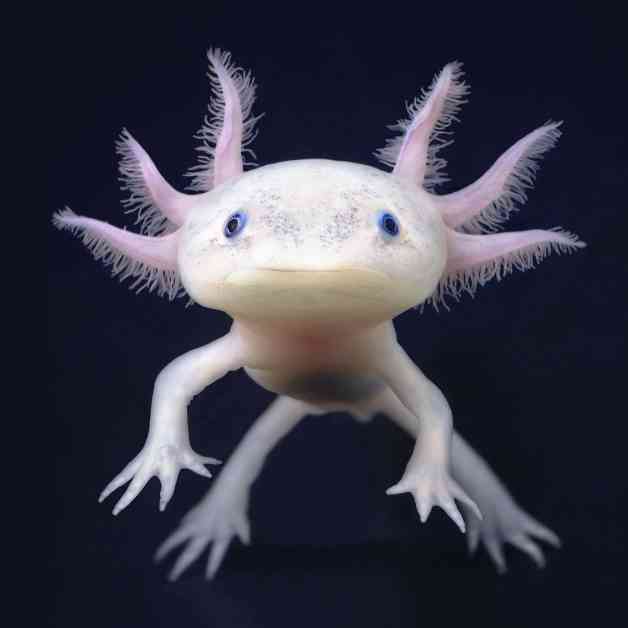Axolotls are unique creatures that capture the imagination of many due to their cute and fascinating traits. These amphibians, endemic to Mexico, are only found in the waterways of Lake Xochimilco and Lake Chalco. Unlike other salamanders, axolotls do not go through metamorphosis and spend their entire lives underwater. They are often referred to as “water monsters,” “water dogs,” or “water puppies” due to their neoteny, which allows them to retain juvenile features even as they grow. They have distinctive frilly gills to breathe underwater and can reach a size of up to 10 inches in the wild.
Scientists speculate that the reason axolotls have developed this unique lifestyle of staying submerged could be due to the evolutionary benefits of their habitat not undergoing wet-dry cycles. While they are capable of metamorphosis, in the wild, they do not transition to land-dwelling creatures. Axolotls are also known for their extraordinary ability to regrow tissue, organs, and even entire body parts, a trait that scientists are studying for potential applications in human medicine.
In addition to their biological uniqueness, axolotls hold cultural significance in Mexico, where they are considered a delicacy and have mythological connections. Despite their cultural importance, axolotls are critically endangered in the wild, with less than 1,000 individuals estimated to remain. Habitat degradation and pollution are major threats to their survival, prompting conservation efforts to restore their wetland habitats and ensure their continued existence.
While many axolotls are kept in captivity for various purposes, the focus remains on preserving their natural habitat to protect the species. Scientists and conservationists are working to save the axolotl from extinction by advocating for the preservation of their aquatic environment. By safeguarding the axolotl and its habitat, researchers believe they are not only protecting a unique species but also preserving the biodiversity of the ecosystems in which they live.
The call to save the axolotl extends beyond just protecting one species; it is about preserving an important part of Mexican culture and biodiversity. The efforts to conserve the axolotl and its habitat are essential for ensuring the survival of this remarkable species and the ecosystems they inhabit. The story of the axolotl serves as a reminder of the importance of environmental conservation and the interconnectedness of all living organisms on our planet.




